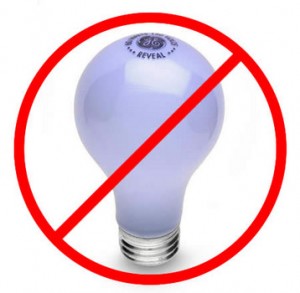 On January 1, 2011, California required light bulb manufacturers to meet new efficiency standards to save consumers money and energy. California based its requirement on a federal standard signed into law and effective January 1, 2012, which required companies to phase out the manufacture of incandescent bulbs slowly over a three-year period. California merely enacted the standard a year early to avoid the sale of 10.5 million inefficient 100-watt light bulbs.
On January 1, 2011, California required light bulb manufacturers to meet new efficiency standards to save consumers money and energy. California based its requirement on a federal standard signed into law and effective January 1, 2012, which required companies to phase out the manufacture of incandescent bulbs slowly over a three-year period. California merely enacted the standard a year early to avoid the sale of 10.5 million inefficient 100-watt light bulbs.
Initially, the California law required traditional 100-watt bulbs to use 72 watts or less. As of January 1, 2012, the law expanded to require 75-watt bulbs to use 53 watts or less. Now as 2013 rolls in, 60-watt bulbs must use 43 watts or less while 40-watt bulbs are reduced to 29 watts or less.
This is in line with the federal law that requires implementation of the same standards with a slightly different implementation period. National law for 75-watt bulbs is effective this year, and 60-watt and 40-watt bulb regulations take effect in 2014.
According to the experts, the benefits from California’s law reduce:
- Air pollution from power plants
- Dependence on fossil fuels
- Emission of polluting greenhouse gases
- Need to build new power plants
Traditional incandescent bulbs waste nearly 90% of the electricity they use as heat instead of converting it to visible, usable light. Compact fluorescent bulbs, known as CFLs, produce the same amount of light but waste less energy in the form of heat. LEDs are even better, converting the most energy into light while creating the least amount of heat.
Whether your prefer LEDs or CFLs, we offer energy-efficient lighting solutions for companies by reducing energy costs, lowering maintenance expenses, decreasing environmental impact, and improving lighting. Contact us today for more information about how we can help you improve your work environment.
